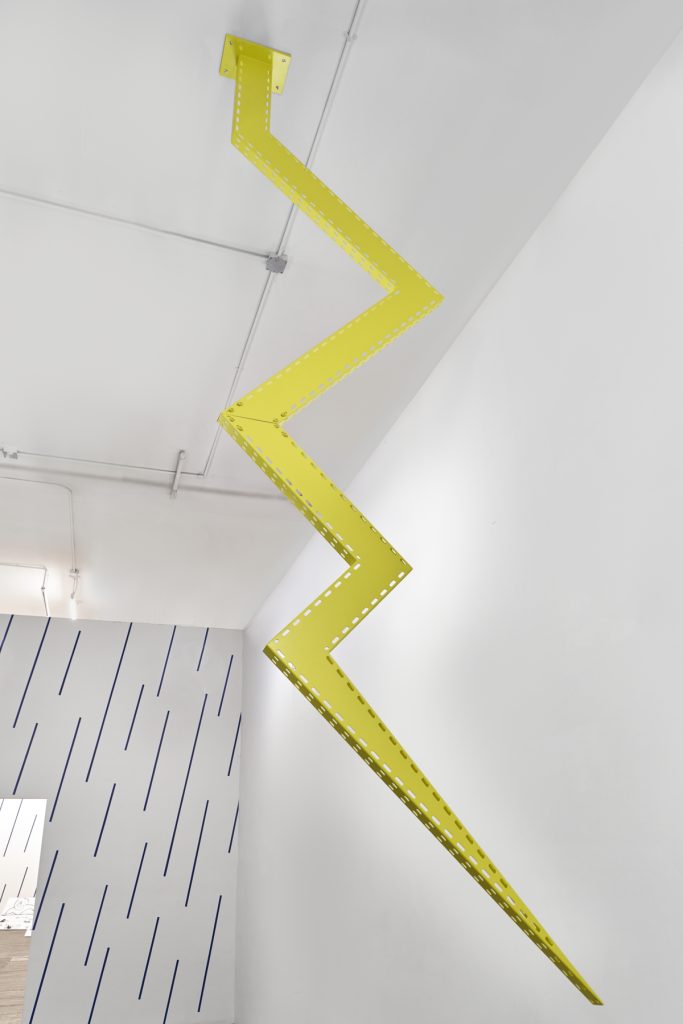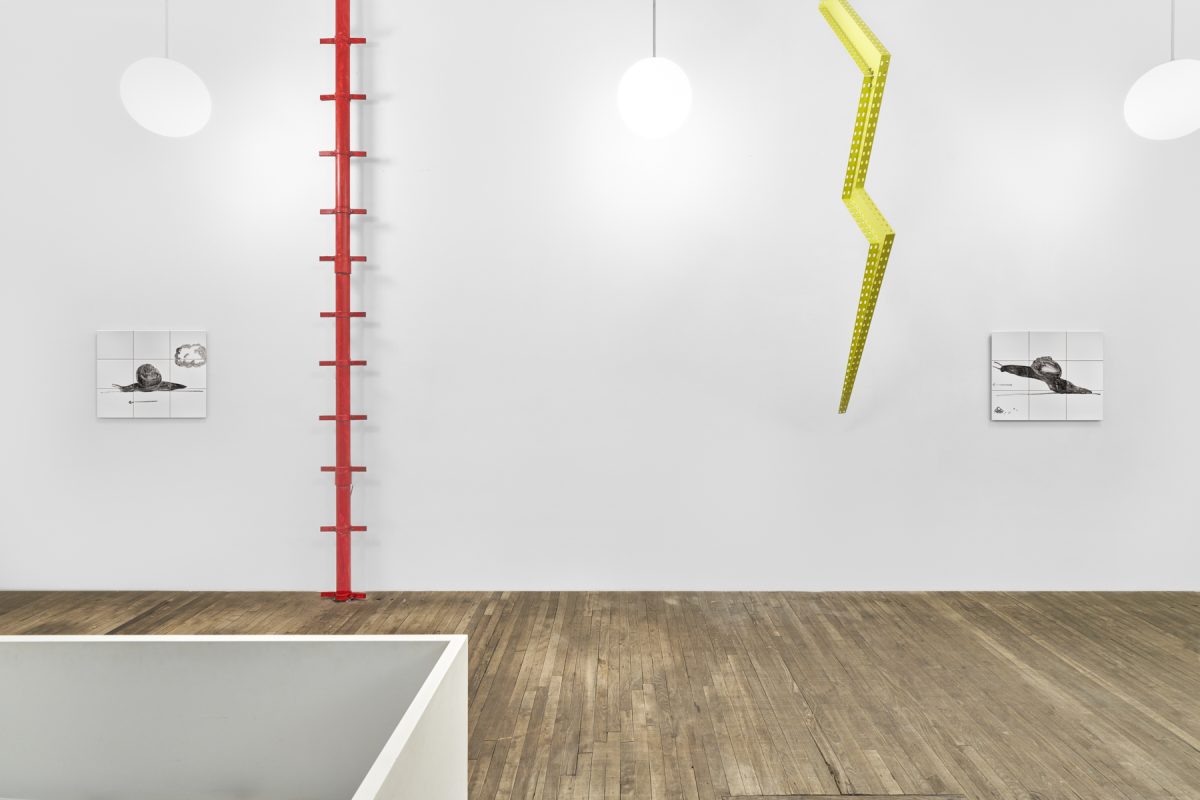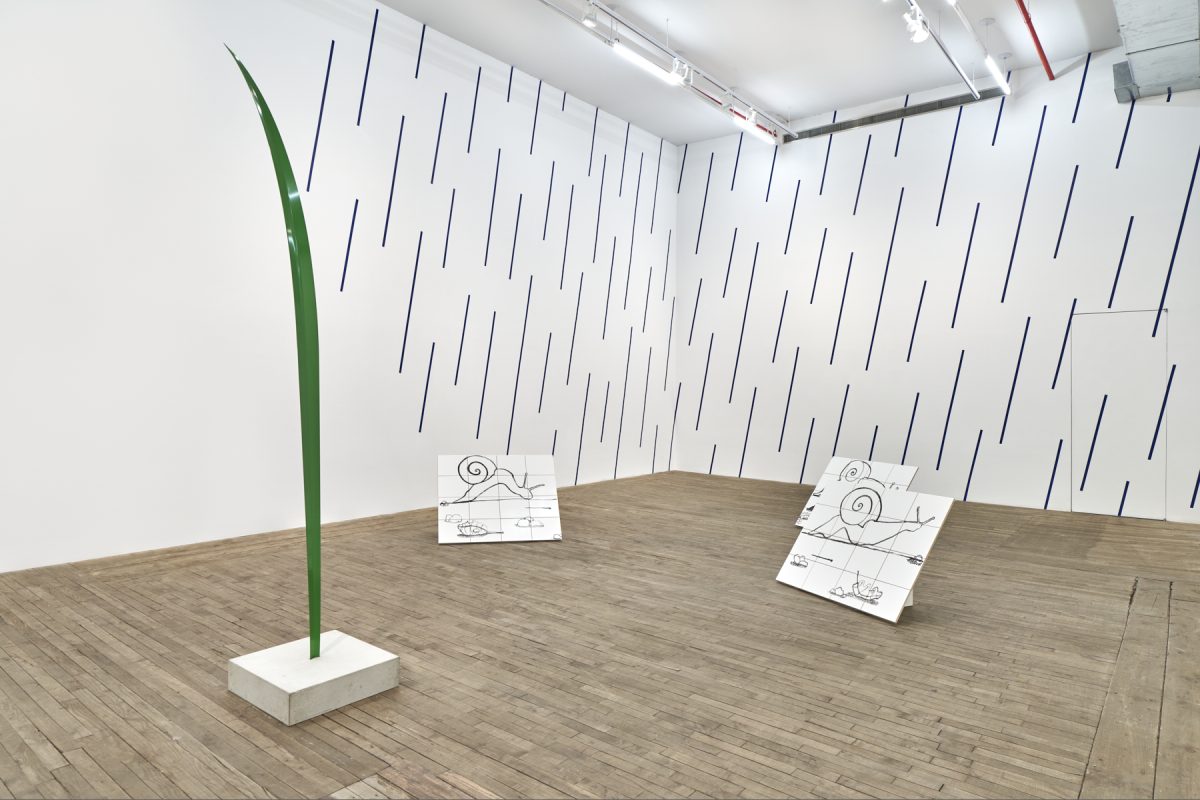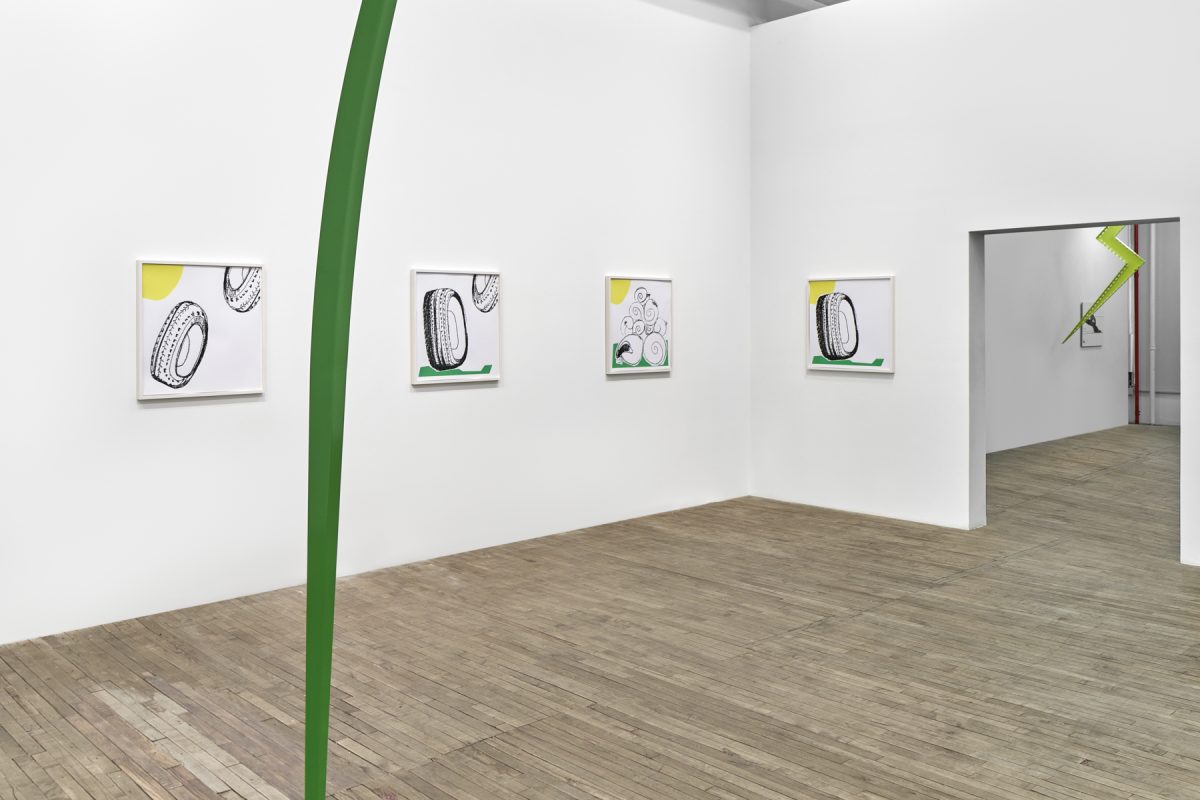
- This event has passed.
kaufmann repetto is excited to announce LOOP STOP, Judith Hopf’s fourth solo show with the gallery, opening in New York on March 29th. The exhibition explores how phenomena and concerns of Nature can weave a dialogue with contemporary art discourse. Themes and subjects related to our environment – animals, plants, weather conditions – invade the gallery space, offering playfully subversive opportunities to question the dominant ideologies of our technology-driven, materialistic world.
With radical rigor the mural Rain runs along the walls of the gallery spaces. The monotonous repetition of blue lines arranged in diagonal flows, painted directly on the walls, evoke an endless rainfall. A bright yellow lightning bolt, stylized as a cartoonish zigzag line made of painted steel, is theatrically suspended from the ceiling. Both works thematize the importance of atmospheric events whose presence (or absence) profoundly influence our environment. Snails, a much overlooked and even despised specimen, are visually and metaphorically taking over the floor of the main gallery. In the Snail Walk series these animals are depicted on free-standing sculptures, their iconic forms synthesized in black lines, gliding over the shiny surface formed by white tiles. This introduces a new direction in Hopf’s ongoing confrontation with the medium of ceramics, frequently tackled in previous works like the porcelain Ravens, the Exhausted Vases, or the clay Phone Users. The quadratic tiles and the grid-like pattern formed by their joints are part of her playful adaptation of minimalist tropes that has characterized her practice since its beginnings. Here in particular, the artist is giving a nod to Henri Matisse and his Chapelle du Rosaire in Vence, where the French painter created murals in a restrained, quiet language by drawing simplified black silhouettes on white tile surfaces mounted to the walls.
At the same time, Hopf bears in mind that ceramic, one of the oldest cultural mediums, is an extremely important technical material for contemporary technology: effectively withstanding extreme temperature changes, it is widely used in the aerospace industry of our times as thermal barrier coatings found in aircraft engines. This potential high-tech performance is in juxtaposition to the narrative of the Snail Walks. The snails are blazing their trail over the sleek white tiles, with vector arrows under their bodies humorously indicating the direction of their progress. Proverbially known for their slowness, they advocate here for a different perception of speed. A snail’s pace is slow but steady and could reach, without losing sight of the goal, as much as 16 feet per hour. It is not fast, but definitely not standstill traffic. The new silk screen series Snailshell Mountain & Landing Hoops take up the same issue. The Landing Hoops represent car tires, which from a mechanical point of view are the means to transmit speed from the engine to the road. While cars have been symbol of mobility and speed throughout the entire 20th century, the rubber wheels in Hopf’s prints illustrate a paradoxical situation: Instead of rolling endlessly on endless asphalt roads, they are now devoid of their function, resting on a stretch of grass, or leisurely floating through the air – like a fetish object of past times that is no longer relevant.
Concurrently, an oversized grass blade is towering in the space. Monumental in scale with a height of 9,7 ft, the extreme enlargement confers a sense of abstraction on this sculptural object. We are forced to look up to something that we normally trample upon without paying any attention. This change of perspective, both on a visual and metaphorical level, is at the very heart of the entire exhibition. As the title LOOP STOP suggests, what Hopf wants to stimulate is a critical scrutiny of our technology-driven, achievement-oriented society that disrespects Nature, its manifestations, and needs, and to emancipate ourselves from the endlessly self-repeating spiral of growth and progress.
“I believe a leaf of grass is no less than the journey-work of the stars” – Walt Whitman






